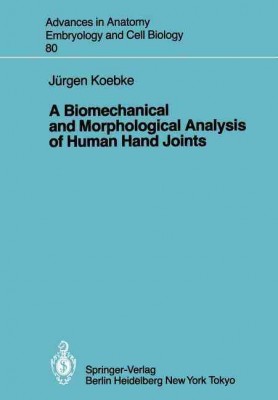| A Biomechanical and Morphological Analysis of Human Hand Joints Contributor(s): Koebke, J. (Author) |
|
 |
ISBN: 3540124381 ISBN-13: 9783540124382 Publisher: Springer OUR PRICE: $52.24 Product Type: Paperback Published: July 1983 |
| Additional Information |
| BISAC Categories: - Medical | Orthopedics |
| Dewey: 574.4 |
| Series: Advances in Anatomy, Embryology and Cell Biology |
| Physical Information: 0.2" H x 6.69" W x 9.61" (0.37 lbs) 86 pages |
| Descriptions, Reviews, Etc. |
| Publisher Description: Functional morphology seeks to establish the relationship between form and function: the description of anatomic phenomena is used as a basis for defining functional factors which themselves, long term, affect the development of the form. This kind of basic study is essential for our understanding of quadruped and human motion and has been discussed by Pauwels (1948,1955, 1960) and Kummer (1956, 1959, 1962, 1978). Biomechanical analysis of human upper and lower limb joints has resulted in causal therapy in cases of joint disease (Pauwels 1935, 1961, 1976; Maquet 1976). Studies of the functional strain on the shoulder joint socket and the elbow joint have been carried out by Pauwels (1955, 1959, 1963) and Tillmann (1971, 1978). Joints of the human hand and wrist have been discussed from a phylogenetic, onto- genetic, anatomic-descriptive, and clinical point of view (Thilenius 1895; Corner 1898; Zrubecky 1960; Lewis 1970; Blauth and Schneider-Sickert 1976; et al.), but so far no studies of these joints have been undertaken with a view to investigating the functional connection between morphology and specific strain. This study aims to establish the relationship between the form and the normal or disturbed functioning of three important joints of the human hand: the proximal wrist joint, the saddle joint of the thumb, and the metacarpophalangeal joints, and to evaluate the findings biomechanically and clinically. |